|
3/26/2017 0 Comments FLOODS AND YOUR LIVESTOCKFloods can impact animal health as well as human health. Make plans for your livestock and horses in the event you will need to evacuate your farm.
Before a Flood • Maintain an inventory. □ Keep a current list of all animals on your farm. □ Include their location and any records of vaccinations, testing and ownership. • Have identification for all animals. □ Make sure animals have some form of permanent identification (e.g., ear tags, tattoos). □ Ensure animals are properly vaccinated before exposure to floodwaters. • Prepare an evacuation kit. □ Handling equipment (e.g., halters, nose leads) □ Water, feed, and buckets □ Medications □ Tools and supplies needed for manure cleanup □ Safety and emergency items for your vehicles and trailers □ Gas powered generators • Make evacuation arrangements. □ Determine possible evacuation areas – higher elevation, alternate production facilities (e.g., temporary milking parlors). □ Determine several routes to these locations. □ Identify alternate water or power sources. □ Locate and prearrange feed and water delivery, needed equipment (e.g., milking) and services (e.g., milk pickup). □ Have well maintained backup generators for livestock production operations. □ Make transport arrangements (e.g., trucks, trailers) with experienced handlers and drivers. □ Condition animals to being loaded and transported. • Ensure a safe environment. □ Assess the stability and safety of barns and other structures. □ Remove dead trees or objects from fields or livestock areas that may serve as potential debris during a flood situation. During a Flood • Be aware animal behavior may change before, during and even after a disaster. □ If you must evacuate, ensure your family’s safety first □ If there is time - move or evacuate livestock and horses to higher ground. AVOID leaving animals behind. □ If there is no other alternative, keep gates or buildings open so they can escape high water. □ Provide access to safe free-choice food source, clean water and the safest living areas possible. □ Do not rely on automatic watering systems, because power may be lost. □ Establish escape routes to safe locations (higher elevation). □ Place your contact number and the name and number of your veterinarian on the building. After a Flood • Assess your animals and building structures. □ Survey damage to your barns and other structures; assess the stability and safety. □ Examine your animals closely; contact your veterinarian if you observe injuries or signs of illness. • Return animals only after the threat has passed and the safety of buildings or the area has been assessed. □ Release animals in a safe and enclosed area until familiarity of the surroundings can occur. • Provide non-contaminated feed or water. □ Provide clean, uncontaminated water. □ Do not feed flood damaged or moldy feed or hay. □ Do not use any feed or forage that may have been contaminated by chemical or pesticides. • Animal disposal. □ Record any animal deaths. □ Check with your state or local authorities for proper disposal methods for animal carcasses. • Prevent illness. □ Keep animals away from flood waters which may contain harmful bacteria or chemicals. □ Monitor animals daily for signs of illness.
0 Comments
When an emergency evacuation order is issued, there isn’t a moment to waste. It’s crucial to have a plan for getting your family to safety, and in most instances this will mean traveling by car. But it isn’t as simple as gathering everyone into the family minivan and hitting the road — there are preparations to be made long before the evacuation order is given, as well as many safety precautions to take on the road.
This guide is designed to protect your family amid the chaos of an emergency evacuation by car. It will start by going over the important tools and supplies you should consider keeping in your vehicle, then move on to general emergency travel guidelines. Then it will discuss any additional precautions to make in case of extreme rain or snow, as well as advice for preparing your family. Don’t wait until emergency strikes to figure out how your family will evacuate. Read on to find out the best ways to prepare ahead of time so you’re ready the moment the order is issued. Vehicle Emergency Kits: Your Best Friend in Preparation There are a few items you should always keep in your car. Not only will they be extremely helpful in emergency situations, but they’ll be handy anytime you run into trouble on the road. Your vehicle emergency kit might include: These tools will be especially important in the event of an emergency where tumultuous road conditions may cause issues. Never opt to rely on your personal technology to fill in for these items; paper maps may seem obsolete if your phone has a fantastic GPS app, but if your service is spotty or your battery is on its last leg, it won’t do you any good. Further, always keep a hard copy of your insurance company’s phone number and auto club information (if you have it) in your glove box. If you’ve lost or broken your phone but are able to borrow someone else’s, it can save you precious moments in calling for help. If you live in a particularly rural or wooded area, you may also want to keep sand, pieces of carpet, or even cat litter in the trunk — should your car get stuck in the mud or snow, they’ll allow you the traction you need to get out. Duct tape is another fantastic option to include in your emergency kit — it’s a quick fix for all kinds of problems, and can help you get back on the road quicker during tough weather conditions. A crucial tool to keep in your vehicle is a car escape tool: one end is a seatbelt cutter and the opposite end aids in breaking or prying open windows. However, this should NOT be kept with your safety kit. Instead, you should mount it to the side of the driver’s seat so that it is always quickly and easily accessible. Make it a habit to regularly check to ensure it hasn’t fallen out of reach — the last thing you want is to reach for it in an emergency and realize it’s somewhere under your seat. Some people take their vehicle emergency kit a step further and keep it constantly stocked with evacuation supplies like bottled water, non-perishable food, blankets, extra clothing, extra medication, and pet supplies. This is certainly a valuable option if you have a truck or SUV, but smaller vehicles may simply lack the space for both everyday needs and evacuation supplies. A valuable alternative is to keep a “go bag” of these supplies in your garage or a closet near the front door; with the materials already gathered, your only step will be to toss it in the car. Each member of the family should have their own go bag with the items they’ll need, and should be in charge of grabbing it when the time to evacuate comes. Bear in mind that children may need help initially putting theirs together. Preparing for and Driving During an Emergency Evacuation Anytime there’s inclement weather or a potentially dangerous situation forthcoming, keep a close eye on the news to stay informed. Listen for updates not only about evacuation orders, but also for information on downed power lines, closed roads, flooded areas, and other dangerous conditions you may be able to avoid. You can also consult with neighbors and loved ones in your area: if they drive different daily routes, they may be able to offer tips on which areas are dangerous and which are allowing traffic to move relatively quickly. Be sure to fill up your gas tank if you even think there could be an evacuation. Put your go bag in the car if you have advanced warning that there could be an evac order issued, and add any additional supplies you might need — a few extra sweaters if it’s particularly cold out, for example — but don’t overload. Driving in turbulent conditions with a car full of frightened family, children, and pets will be stressful enough, so don’t add to your anxiety by making everyone jam in among non-essential items. While waiting for an official order, check your car to ensure it’s in good working order and can make the trip without issue. Clean the headlights and tail lights, wipe down the windshield, and check that your wipers are clean and functioning, and add wiper fluid as needed. If the temperature is low, check your antifreeze level and add coolant if you need to. Finally, take a moment to be absolutely certain your tailpipe is clear of any ice or other blockages: carbon monoxide poisoning is silent but deadly, and if your family will be in the car for an extended period, you want to be sure they’ll be safe. If your government orders an evacuation, follow their instructions implicitly. Don’t try to wait it out in case conditions improve or take an alternate route instead of a designated evac route. Remember, officials are working off of advanced information that you may not be aware of, so their word on what’s safest is trustworthy. Once your family is loaded up, buckled up, and on the way, limit distractions as much as possible. Keep the radio tuned to local news or weather, and keep discussions to a minimum so you can concentrate on driving. Be on the lookout for broken power lines, car accidents, flooding, debris, pedestrians, and other hazards on the road. Approach intersections with caution: if stoplights aren’t working there may be a police officer directing traffic, but if no one is there to direct you, it should be treated as a four-way stop. Keep your speed steady and relatively low so you have plenty of time to react to changing conditions. Always signal your intentions to turn, change lanes, or merge well in advance. Most states don’t allow drivers to use their hazard lights while driving, and instead advise they be used only to make your car visible if you’re stalled on the roadside or are pulling off to deal with an emergency. Only pull off to the side of the road if your car is malfunctioning or there’s an unsafe situation with your family — if your young child in the backseat is choking, for instance, it’s dangerous to try to navigate the road while panicked, even if your spouse is there to help. Use your low-beam headlights to make your car more visible to oncoming vehicles. You might be tempted to turn on your high-beams, but don’t! It can actually reduce your visibility as well as blind oncoming drivers, especially in foggy conditions. If you’re having trouble seeing the road in front of you, it may help to use reflective lane markers as a guide. You may even be able to use the tail lights of the car ahead as your guide, but be sure you don’t follow too closely — increase your usual three-second following distance even if conditions seem clear. Further, keep in mind that the driver ahead may have trouble seeing, as well, so constantly refer to lane markings to ensure that he or she hasn’t veered off-track and unintentionally led you to do the same. Be wary of high winds, especially if you drive a large vehicle that will be more susceptible to tipping. Expect to encounter random large gusts, and be careful not to overreact if one startles you. Keep a firm grip on the wheel at all times and overcome the wind as calmly and smoothly as possible. Be conscious of where other large vehicles like SUVs are on the road in relation to you, and avoid ending up next to them as much as possible. If you aren’t completely certain of your route, use a hands-free GPS to guide you if conditions allow. Otherwise, have another passenger guide you via map or otherwise. Never allow yourself to be distracted by your phone while you’re moving, even if it’s genuinely to reference map guidance. If you’re traveling solo, your car should have a mount for your smartphone or GPS system. Continue to drive cautiously even after you’ve cleared the main area of danger. Severe storms can not only move quickly and catch you by surprise, they can cause additional hazardous conditions like tornadoes and landslides even miles away. Further, many people on the road will be anxious or even lost attempting to get to safety, and may be driving erratically. Additional Considerations: Flooding The general rule for driving in flooding conditions is “turn around, don’t drown”: simply put, never attempt to drive through a flooded road. You have no way of knowing the condition of the terrain underneath or any lurking debris that could impede your car. There could even be a broken power line close by that’s electrified the water. Even if the water doesn’t appear to be moving, the safest option is always to turn around and find an alternate route. Still convinced your car could handle a little flooding? Keep in mind it only takes about six inches of water to reach the bottom of most passenger vehicles, which can cause you to stall or lose control. It takes only about a foot of standing water to float most cars. Floods are a serious driving danger for any car, even those that sit up high. In fact, two feet of rushing water can sweep up most vehicles without much trouble, including large pick-up trucks and SUVs. Even seemingly slow-flowing flood waters have far more power than most realize: at only 7 miles per hour, flowing water has the same amount of force per unit area as winds from an EF5 tornado. Remember, no matter how inconvenient the detour: turn around, don’t drown. If your car becomes stuck and stationary in flood water, it’s usually best to stay inside the vehicle and call for help. However, if the water is shallow enough to see to the bottom and completely unmoving, plus there is dry land very nearby, it may be better to get your family out. When you call 911, ask the emergency responder your best course of action. If your vehicle becomes submerged, it’s vital that you act immediately to get out before it sinks. A general rule of thumb is “seatbelts, windows, children, out”: unbuckle your seatbelt the moment your car hits the water, or use your emergency cutter if it gets stuck. If you have power windows, they may not be functioning properly, so use the other end of your cutting tool to either break or pry it open. (Keep in mind that even if the door isn’t forced shut, opening it will allow in more water more quickly and sink your car that much quicker.) Prioritize getting your children out first — they’ll likely have a tougher time battling the rushing water, so you may have to help push them out. Young children may do best to stay in your arms, so consider holding them as you get yourself out. Timing is absolutely crucial when it comes to a submerged car, so don’t waste time calling 911 or reaching for any belongings. It’s estimated that you have only a minute to get yourself and your family out safely, so make every second count. Only call for help once everyone has made it out of the car to safety. Additional Considerations: Snow and Ice If you’ll be driving in particularly icy conditions, you may want to consider adding chains to your tires. Keep in mind that different states have different laws about the kinds of tire traction you can use, so find out what the standards are in your area. Even if you’ve never needed them before, it may be worth the investment to buy some kind of tire traction device — less expensive options include a sort of “sock” you can place over the tire — if you live in an area with snowy winters. It’s impossible to say when an especially nasty storm could pop up, and you don’t want to face the stress of rushing to the store before evacuating. You also may want to pack extra blankets, socks, gloves, hats, and other winter gear if you’ll be evacuating in the snow. (Pet owners: don’t forget extra materials for your animals!) If you become stuck, you’ll want to be sure you stay plenty warm while help is on its way to you. If your car does stall in freezing conditions, do not go looking for outside help unless you know exactly where you are and are completely certain you’re close to a building with people. Use your emergency flares or reflective triangles to mark the front and back ends of your car, or tie a piece of brightly colored material to your antennae to make your vehicle as visible as possible. If you’re unable to call for help, you may wish to honk the horn for long periods (you might even want to try the S.O.S. morsecode) to attract attention. If your car still has fuel and you’ve re-checked the exhaust pipe for obstructions, run the engine and car heater for about 10 minutes every hour or so. If you’re low on fuel, try to depend on your extra winter gear for warmth as much as possible, but don’t force anyone — especially children — past their limits. It may help for everyone to huddle together in the backseat to maximize your body heat. And though it sounds counterproductive, keep at least one window slightly open; heavy snow can actually cause a car to become sealed shut. A Note on Preparing Your Family Talk to your family about your evacuation plan long before it needs to be implemented, especially children; though they will likely still be afraid in the moment, it will be less jarring if they’ve been prepared with a conversation and have steps they can focus on taking. Let them choose a toy or stuffed animal ahead of time that they’ll be allowed to bring in the car for comfort — just make sure to let them know that if it’s a noisy toy, it will need to be kept quiet on the drive so that you can safely concentrate. Practice emergency drills with the entire family, including your pets. You can even make it a game: keep records of how long it takes everyone to gather their go bags, get into the car, and hit the road. Try to better your time with each drill, and address any issues that seem to be hurting you. Designate a specific family member to grab the pets. Further, if your pet normally doesn’t do well in the car, use the drills as an opportunity to get used to it. Drive around the block at a slow, steady speed at first, then work your way up to faster speeds on main roads. Your pet may still be somewhat freaked out in an evacuation, but at the very least the car won’t be completely unfamiliar territory. Facing an emergency evacuation is frightening no matter how you look at it, but the more prepared you are ahead of time, the fewer challenges you’ll encounter when disaster hits. 3/26/2017 1 Comment Disaster Safety for People with Disabilities: What to Do When Emergency Weather StrikesWe all like to believe that when a major hurricane is headed our way or a tornado warning is issued, we’ll know exactly what to do. But inclement weather is unpredictable, and it can be frightening and chaotic to handle in the moment. It’s crucial to prepare and plan well in advance for any natural disaster that your area is prone to, especially if you have a disability that could require additional safety considerations.
This disaster safety guide will help you know what hurdles to anticipate, factors to consider, and ultimately, what to do when emergency weather occurs. It will take into account people at all different ability levels and the kinds of challenges they might encounter during hurricanes, blizzards, landslides, tornadoes and earthquakes. Be sure to consult with your doctor about any additional precautions you might need to take, as each person may have more specific needs to address. General Preparation Regardless of where you live or the specific inclement weather your area may see, it’s important to take a few general safety precautions. First, establish a personal emergency network of family, friends, neighbors, and coworkers who can help you in the event of a disaster. You should have a list of at least three people for each place you spend regular time in: home, work, school, vacation homes, or timeshares. Some people may pop up on multiple lists, but the more options you have, the better. Their job is to check in on you when a storm is brewing or weather watch is issued, and make sure you’ll have a safe place to be. You’ll need to establish how everyone will get in touch, keeping in mind that phone service might be limited. For those nearby, it can be as basic as a knock on the wall to your neighbor or hanging a piece of cloth outside your window. Your network will need to have any necessary keys or security codes to reach you, so make sure it’s someone you trust implicitly. Go over how to use and transport any special equipment you’ll need, as well as medications that will need to be taken with you. Put together a disaster safety kit with about a week’s worth of supplies and keep it somewhere secure but easily accessible. If you have a service dog, put aside the items they’ll need. You’ll also want to let your service animal spend some time getting to know the members of your network. It will be crucial that the animal trusts those people to lead the way to safety in the event of an emergency. Find out the names and locations of designated safe zones and shelters in your area, noting which ones are closest to your home, workplace, or any other place you are likely to be in the event of an emergency, such as a friend’s home. Make practice drives to become familiar with the route, learn how long it takes to get there, and to get a good look at the surrounding area. Practice a faux emergency to go over all the steps needed, from getting into your front door to loading up your equipment to transporting you to the car, for example. Pay close attention to how long each task takes you to do, and look for opportunities to cut down your time. Even just moving your emergency kit closer to the front door can save precious seconds. Image via PixabayReplenish your supply kit as necessary, and consult your doctor about the shelf lives of your medications so they don’t lose their effectiveness. Even if you’ll be planning to evacuate your home in most emergency situations, don’t forget to set aside plenty of bottled water, non-perishable foods, and sanitary supplies. If dangerous conditions make it difficult to reach you, it’s crucial that you’ll have the means to get by in the meantime. If you use powered medical equipment in your daily life, you may want to consider buying a generator for emergency situations. It may be a sizable investment now, but you never know when you could end up needing it. Finally, go over your insurance policies to be sure you completely understand everything that you are and aren’t covered for. Ask specifically how your medical equipment is protected, and if it’s only guaranteed under certain conditions. Flood insurance and water damage is often not included in certain policies, so don’t be afraid to ask for clarification from your agent. HurricanesIf you live in a tropical or coastal region, it’s important to be aware of the peak hurricane season in your area. If you live on the Atlantic Coast, you’re at highest risk from June 1 until November 30. For the Pacific Coast, hurricanes are most likely May 15 through November 30. Pay attention to weather reports year-round so you’ll know in advance if a particularly rough season is ahead, and make it a consistent conversation with your safety network. Be sure that if a colleague will be your work ally, you talk to your partner about where you’ll go if an emergency occurs during business hours. Plan to first get yourself to safety, and then check in as soon as possible. When your peak season does roll around, keep a close eye on any major storms that are brewing, even if they aren’t predicted to hit your area. Hurricanes have been known to make sudden, dramatic shifts in direction, so the more updated you stay on how they’re progressing, the less likely they’ll catch you off-guard. Know the designated evacuation routes for your region and how to reach them quickly; even if a spouse or caregiver will be driving, you can help guide them if you know the way. However, be prepared for the possibility of flooded roads and scout out some alternative routes in advance. Remember: the rule is turn around, don’t drown, so be prepared. If a hurricane watch is issued, you’ll need to establish whether or not you’ll be staying in your home. Heed the advice of the National Weather Service and plan to evacuate if they give the order. Keep in mind that even if the storm isn’t dangerous enough to warrant an evacuation, strong winds and rain could still knock out power lines, and flooding can occur in low-lying areas — which could make it difficult or even dangerous if you’ll need power for any equipment. Play it safe not only to protect your family, but to eliminate as much stress from the situation as possible. Image via PixabayIf you have ample warning to prepare for a hurricane’s arrival, do what you can to protect any medical equipment you’ll leave behind. Double wrap supplies like gauze and tools in plastic bags and store them somewhere secure and high in case of flooding. If possible, wrap electronic and large equipment in plastic and move them to the highest room you can. Don’t prioritize any of this over your own safety, but protect what you can if there’s time. Anticipate difficult mobility conditions even if there isn’t immediate flooding in your region. For example, if you normally use a motorized chair, it might be quicker and easier to use your backup manual chair for the evacuation. This can be especially helpful in instances where a neighbor or relative who doesn’t have the necessary car modifications to transport your motor chair. Grab heavy boots and work gloves to protect yourself from debris. BlizzardsAs with hurricanes, you often have a bit of warning with blizzards, so stay informed and alert to updates. If you have a generator, check to be sure it’s in good working condition so it will be ready the moment you need it. It’s a good idea to keep backup equipment batteries as part of your emergency supply kit, but if you have the safe opportunity to buy more when a blizzard is on the way, do so. You’ll also want to check in with your doctor. Request any medication refills you might need, taking into consideration that roads may be blocked and businesses closed for several days at a time. Ask if there are any aspects to your condition that could be exacerbated by the freezing temperatures and what you can do to prevent problems. There may even be some specific non-perishable foods your physician can recommend that will be especially nutritious for you to focus on until grocery shopping is possible. Be over-prepared when it comes to protecting yourself from the cold, even if you’re not especially susceptible to problems from it. Insulate your home as much as possible — hanging dark curtains over a window with direct sun can make an important difference — and bundle up. Be especially mindful of warming your fingers, toes, ears, nose, and cheeks, as these areas can be quite prone to frostnip and frostbite. And don’t forget to have some extra blankets set aside for your service animal if you have one. LandslidesUnfortunately, landslides can be pretty unpredictable and happen quickly. If you live alone and there are warnings that a landslide could occur overnight, you may want to stay with a neighbor or nearby loved one so that you can have a quicker evacuation if needed. Bring any portable medical equipment you could need within the next day or two, as well as medication and other supplies. If you are in imminent danger from a landslide, get in touch with your nearest emergency network contact immediately. Grab only absolute necessities for the next few hours, and don’t lose any time trying to protect what you leave behind. Because this kind of natural disaster happens so quickly, time will be your biggest obstacle. You’ll be able to figure out replacement nonessential supplies later on, but getting to safety means acting fast. Image via PixabayMake sure that if your home or workplace is affected by a landslide, you don’t return until officials say it’s safe. Check your equipment closely for damage, then report any damage and find out about replacements and repairs. If your house is clear but traveling is difficult because of damaged roads, use the medication from your emergency supply kit. TornadoesMany places have tornado sirens that sound when a warning has been issued, but it can pose a major problem for someone who has limited hearing. And if sirens aren’t working or cued up in time, it can be easy to miss an issued warning if you’re in class, working, or otherwise occupied. Be sure your emergency network knows to contact you the moment a tornado watch has been issued — the simpler the better, so a clear, emphasized text message such as “TORNADO WATCH” can suffice. Even if no cyclones are on the ground yet, you should get to a safe place immediately. This is especially important if you are on a high floor and have a physical disability; you’ll need to get to lower ground immediately, but getting on an elevator could be dangerous if the power goes out. Since you may have to depend on stairs, you’ll want to get moving as soon as possible to allow yourself plenty of time. This should be a procedure you practice every once in awhile with your emergency network. The more confident you feel about being able to get to safety, the calmer you’ll be in the chaos of a real tornado watch. You’ll need to get as far away from windows and exterior doors as possible, ideally underground. If you have a service animal, make sure it stays on its leash. Even if it normally doesn’t need one, the chaos will almost certainly make it nervous, and might even cause it to suddenly run away out of fear. Those with a visual impairment should hold hands or maintain some kind of physical anchor to their emergency ally, and established hand signals may be helpful communication devices for people with hearing impairments. Once you’re in the basement, storm shelter, or lowest level, get under a heavy table or desk. If you’re in a wheelchair, don’t worry about getting the chair underneath with you — you are the priority. Duck down and cover your head and neck with your arms. Stay where you are and don’t go outside until you’re given an official all-clear signal. Be careful about possible debris on the ground when you do venture out, and wear heavy boots and work gloves if possible. Earthquakes Perhaps the most unpredictable of natural disasters, earthquakes require the quickest thinking. The moment one strikes, you should drop, cover, and hold — if you have a service animal, take it with you. If you’re in a wheelchair, lock it in place and get out of it and under a heavy table or desk. If you’re unable to get out and no one is around to help you, lock the brakes, then cover and hold as best you can — be sure to stay as far as you can from windows and other glass. Image via PixabayIf you’re in bed when an earthquake strikes, use your pillows, blankets, and sheets to shield yourself from falling debris. Stay where you are for several minutes afterward, bracing for possible aftershocks. If you’re injured during the event, stay put and contact 911 immediately, then ask paramedics to contact your emergency network. Contact your emergency network first if you’re not injured. Let them know the condition of your house and if you need any assistance. If you’re able to move around the house on your own, be extremely careful and wear thick-soled shoes. If you have a manual wheelchair, wear protective gloves in case your wheels roll over any sharp debris. People with a visual impairment should sit tight until someone can arrive to assess their situation. If no one else is present at the home, a member of the emergency network should stop by to see the house. If the damage is extensive, it may be necessary to wait for emergency professionals’ guidance. Be sure to check your service animal for any injuries and communicate them to your emergency network. Your animal will be especially stressed and probably anxious from the earthquake, so try to keep it as calm as possible. If there are emergency workers nearby, let them know if the animal is hurt and needs emergency care. The key to disaster safety is preparation, so do all that you can to stay ahead of the storm. Have regular practice drills with your family for each emergency your area could face. If you’re a caregiver, have practice drills with your loved one. If there is a cognitive disability to consider, be sure not to confuse or scare him or her, and emphasize when it’s only practice. Always remember: there’s no such thing as being too prepared for natural disasters! After the flood waters recede and the clean up has been done, most folks want to get back into their homes or businesses and start rebuilding. The problem is that wood that has been submerged in water has likely absorbed a large amount of water. Rebuilding too quickly after a flood can cause continuing problems such as mold growth, insect infestations, and deterioration of the wood and wall coverings.
Flood waters are not clean water; therefore, most porous building materials must be removed and replaced with new materials. Caution!
1. Flood Insurance Claims If you have flood insurance, contact your insurance adjuster immediately.
Be sure all electric and gas services are turned off before entering the premises for the first time.
Until your local water company, utility, or public health department declares your water source safe, purify your water, not only for drinking and cooking, but also for washing any part of the body or dishes.
Remove all furniture, bedding, and carpeting to outdoors to be cleaned and dried (or discarded).
Open flooded walls, even if they appear undamaged, to prevent mold, odor, and structural decay later.
1. Subfloors
To reduce mold and damage, clean and dry as soon as flood waters recede. Do not sand or scrape lead-based paint.
Clean and dry the submerged household appliance before starting.
Take furniture outdoors to clean.
Aggressively control mold in the weeks and months after the flood.
Avoid disturbing and spreading mold spores indoors. Clean mildewed items outdoors. Learn and take precautions to minimize exposure to mold.
.Basement flooding is one of the most stressful, yet prevalent issues homeowners face on a yearly basis. Flood damage is not only difficult and timely to remove, but it can also ruin Super Bowl parties or lifelong memories for you and your family. Nonetheless, like almost any home issue, there are certain precautions homeowners can take to ensure no water comes anywhere near the basement. Below are our five tips to avoid a flooded basement.
Keep Gutters Free of Debris The best way to prevent basement flooding is by keeping your gutters free of debris. Preventing water from leaving your premises is never helpful. Your gutters were put in for a reason and driving water away from the home is its No. 1 function. If leaves or branches get caught in your gutters, water could start to pile up and leak right around your foundation. The more water near the foundation, the more likely your basement is going to flood. Cleaning your gutters is easy and should be done every spring and fall. See our step-by-step guide for cleaning your gutters here. Make Sure There are No Cracks in the Foundation Even if your home has no history of flood damage, it is vital that you seal cracks in the foundation walls and basement floors. I don’t need to explain that if there are holes in the foundation, water will get into the basement. There is no way around it. Many sealing solutions are DIY projects, but some require professional installation. Start by removing any crumbling concrete and repair all cracks in the walls and floors. Use masonry caulk on cracks less than 1/8 inches wide. Caulk only costs about $10 per tube. Patch wider cracks with epoxy filler and a putty knife. Remember to patch the places where pipes and tie rods pass through the concrete. Drylok Fast Plug is effective for sealing cracks in masonry. For complex cracks or those subjected to movement, hire a professional, as DIY kits are less reliable for this level of damage. To see what it cost to seal the cracks in your foundation, check out our basement sealing cost estimator. Position Downspouts Away from FoundationYour gutters could be as clean as whistles, but if you don’t have proper downspouts directing all that water away from your foundation, basement flooding can occur. They need to be thick and long enough to handle large amounts of water. Especially in areas of heavy rainfall, downspouts of 3X4 inches are highly recommended. They should be placing the rain gathered from the gutters at least five feet away from the home. If your current downspouts are not meeting these basic guidelines, you should think about extending them, another simple DIY project Every year, flash floods claim more lives in the United States than any other weather-related incident. The most common mistake is attempting to drive through a flooded area after a flood -- many drivers assume the waters are shallow enough to navigate. Travelers also encounter flash floods while camping or hiking in national parks and just about any other terrain with topography that includes hills, mountains, valleys, creeks and rivers.
Weather experts describe flash floods as “more water than you want in less time than you have.” Personal safety risks from flash floods can be minimized and avoided with smart planning. Here are 5 questions to ask in advance of a trip that will help travelers prepare for a flash flood. 1. Is an area flood-prone? Before setting up a campsite, pay attention to flash flood warning signs but don’t count on those signs to always be there. A deadly flash flood in June 2010 at Camp Albert Pike Recreation Area, a campground in Arkansas near the banks of the Little Missouri River, shows why due diligence is important. The area had experienced at least 10 river floods over the past 7 decades, yet no warning posters were present in the area. Don’t just rely on signs. Inquire with a campground office about an area’s flood history. When setting up a campsite, look for evidence of past floods, such as large logs littering a creek or riverbed and high-water marks on river banks and trees. Signs of past flooding in a canyon include water stains on canyon walls and debris hanging from bushes and low branches. 2. Does the weather report call for a flood watch? Check the weather forecast before a hike or a camp outing. If a flood watch is in effect, potential exists for heavy rains to create flash flooding within 6 to 24 hours. Postponing a trip a day or 2 could save a life. When hiking in the West, pay particular attention to weather reports from July to mid-September. That’s when severe thunderstorms are most likely to develop quickly. Finally, if visiting a flood-prone city, “on the ground” weather reports are available from the local convention and visitor’s bureau. 3. Does the area have cell phone or radio towers? Know the risks of camping in remote areas without access to a cell phone or radio. Roughly 75% of flash flood fatalities occur at night, when rapidly rising water is more difficult to detect. A weather radio that can broadcast weather alerts is essential. Such websites as CellReception offer details on cell phone coverage within national parks. Also call the campgrounds to ask if it is located close to a radio tower (the Albert Pike campground was not close to a tower). 4. When should you avoid driving in a flood? If you notice while driving during a storm that the middle line on the road is no longer visible, heed this advice from the National Weather Service. “Turn around, don’t drown.” Just six inches of water is enough to lift a vehicle off the ground. If you are caught in rising water, abandon the vehicle and seek higher ground. If you are trapped, wait until the car partially fills with water. Doors locked from water pressure should open once the water pressure is the same on both sides of the door. Also, press your feet against the windshield, which should then pop off. Finally, never drive around a “Road Closed” sign. It’s closed for a reason. 5. Have you formulated an evacuation plan? As a record-breaking flash flood in 2010 in Nashville, Tennessee proved, travelers don’t need to be in rural areas to encounter a flash flood. Before booking a hotel room, ask if the hotel has an evacuation plan (such as a makeshift shelter), as well as back-up generators. “Have a list of phone numbers and websites handy for the local convention and visitor’s bureau and office of emergency management,” says Butch Spyridon, president of the Nashville Convention and Visitors Bureau. “If you’re driving, be prepared to fill up your gas tank when you arrive at your destination -- don’t wait until you’re leaving town.” Whether you’re set to embark on a hike, camp outing or long-distance drive, staying vigilant -- and recognizing the signs of a flash flood -- should keep you safe and dry. What Is a Hurricane?A hurricane is a kind of tropical cyclone that includes organized thunder storms but no fronts. (Fronts are two air masses of different densities, such as cold fronts and warm fronts.) Tropical cyclones are measured in escalating degrees: When the winds in a cyclone are below 39 mph, it is considered a tropical depression. When the maximum sustained winds in a tropical cyclone reach 39 mph, it graduates to a tropical storm. Finally, when those winds sustain 74 mph or higher, the cyclone graduates further to a hurricane.
Hurricanes are not the same thing as tornadoes. Many people falsely believe that hurricanes are simply tornadoes forming over the ocean. In fact, the only thing the two have in common is that they are both swirling, destructive columns of air. The main differences between hurricanes and tornadoes are:
Hurricane Damage ScaleHurricanes, like tornadoes, are defined by categories on the “Saffir-Simpson scale.” This scale measures the potential for damage caused by hurricanes, based on the strength of the sustained winds. (Sustained winds are those that last one minute or more.)
Interesting Hurricane Facts
With the recent spate of flash floods in Detroit and Baltimore and New York, a common question rising in the storms' aftermath asks how often certain areas of the country see flash floods. I put together some maps to show how frequently different parts of the United States experience these dangerous torrents of water.
A flash flood is the rapid onset of flooding due to extremely heavy rainfall in a relatively short period of time. In low-lying areas, especially near creeks, streams, and in hilly urban areas, water can rise very quickly during a heavy rainstorm. The floods sometimes occur with very little (or no) warning. One of the ways we can tell how frequently flash flooding occurs is to look at the number of flash flood warnings issued by the National Weather Service. Unlike tornadoes, which can develop so quickly that meteorologists and their technology can miss them and fail to issue a warning in time, it's hard to not issue a flash flood warning when the threat exists. Meteorologists use a product called "flash flood guidance" to aid them in determining when heavy rainfall presents a threat to those under the storms. The guidance shows how much rain has to fall in a certain period of time (say, two inches of rain in an hour) in order to create conditions favorable for the development of a flash flood. The factors that allow for the development of flash floods include soil moisture (soil too moist or too dry can't efficiently absorb heavy rainfall), terrain, proximity to bodies of water, and urbanization. Urbanization is an important factor in flash flooding. Unlike a thunderstorm over farmland where water can seep into the ground, when heavy rain falls over a city, it's hitting pavement and running off into the sewers. As Dr. Marshall Shepherd noted on Twitter last week, the sewer systems in cities were designed back in the 1950s and 1960s, and they aren't able to handle heavy rainfall events today. It usually takes a less intense storm to produce flash flooding in downtown areas than it would in a place like Carroll, Iowa. Let's take a look at seven years' worth of flash flood warnings (almost 27,000 in total) issued by the National Weather Service between early 2007 and July 2014. I chose 2007 for two reasons: 1) the NWS began issuing "storm-based warnings" in October of that year, which limits a warning polygon to the area affected by the storm rather than for the entire county; and 2) the Iowa Environmental Mesonet's flash flood warning data for 2006 is missing, and I would rather not have an entire year missing from the data if I wanted to go back further to 10 years. United StatesTaking a look at the entire country, it's clear that most of the flash flood warnings issued by the NWS occur east of the Rockies, with two areas of higher density around the Mississippi River and the I-95 corridor from D.C. to Boston. The southwestern United States also stands out as a hotbed of flash flooding. NortheastWe'll start in the northeast and work our way clockwise through the rest of the country. The frequency of flash flood warnings over the seven-year period lowers as you move north and west away from the megalopolis. The highest density of flash flooding occurs in the immediate vicinity of downtown areas such as New York City, Philadelphia, and Washington/Baltimore. The densely-packed streets, parking lots, and sidewalks don't allow the water to absorb into the ground, forcing it to run off and increase the risk of urban flash flooding. Mid-AtlanticIn the Mid-Atlantic region, the warning frequency starts to grow a little blocky. As a resident of central North Carolina, I can attest to the fact that the state often sees flash flood warnings. Thunderstorms tend to move through this area very slowly, creating runoff issues, especially in cities such as Greensboro and Raleigh. If you're wondering why the warnings are so blocky, it's a result of bureaucracy. There are more than 100 National Weather Service offices in the United States, and each one has a "county warning area," or an area of responsibility for which they issue forecasts and warnings. They can't issue warnings outside of their CWA boundaries, so the end result is a blocky mess of warnings when you zoom-out to a regional view. Here's the same warning map with the NWS office boundaries drawn on: It shows there's no real environmental reason for the blocky nature of the warnings, but rather it's the result of jurisdiction and one group of forecasters seeing a higher threat than forecasters at a neighboring office. SoutheastThe southeastern United States is able to hold its water a little better given the relatively sparse population density compared to the northeast, but that changes once you get into the swampy areas of the northern Gulf Coast. Southern Alabama and Mississippi see some of the heaviest rainfall in the country (Mobile is the wettest city in the U.S.), so the water frequently overwhelms the infrastructure and leads to flooding. The propensity for heavy rainfall along with the low-lying, saturated nature of the terrain in the Mississippi River Valley also leads to frequent flash flooding, accounting for the near-solid green color on the map. FloridaIf you pick up one message from this article, it's that we humans are the cause of a lot of the flash flooding we see on the news. Just look at Florida as an example. Florida as a whole doesn't really see much flash flooding, but take a close look at the strip of cities along the state's southeastern coast. Most of the flash flood warnings in Florida are confined to cities where water has a hard time running off into the environment. South-CentralTaking a look at the south-central U.S. doesn't yield many surprises. The blocky nature of the warnings in Texas is a result of NWS offices issuing warnings based on counties rather than the storms, in addition to the office boundaries (look around Lubbock for a great example). Midwest/PlainsMoving north so we don't forget our friends in the Midwest, much of the flash flooding that occurs in the region is the result of thunderstorm training (heavy storms constantly moving over the same area like train cars on railroad tracks). The soil is very fertile in the area and can hold its fair share of moisture, but when it gets too saturated, the water just runs off and creates a dangerous situation for residents. Again, for the urban effect, look at the dense warnings around downtown Chicago and Minneapolis. Rockies/PlainsAs we move into the western Plains and the Rockies, flash flooding becomes more sparse due to the general lack of convection most of the year. The worst flooding in the area often occurs along the eastern side of the Rockies in eastern Colorado, especially around Colorado Springs. SouthwestThe southwestern United States sees quite a few flash flooding events thanks to the monsoon season. The desert areas have an interesting feature called "arroyos," which are also called "washes" or "dry creeks" depending on who's talking. These are dry creeks which stay dry until there's a heavy rainfall event upstream. Oftentimes, arroyos fill up all at once, with a wall of water rushing downstream from the thunderstorm. Every year people are killed because they're hiking in an arroyo and there's a thunderstorm miles away, sometimes so far away that it's sunny where the doomed hikers are located. Above is a video of flash flooding in an arroyo in Nevada, showing how it goes from bone dry to a few feet of swiftly-moving water in less than two minutes. NorthwestThe northwestern United States doesn't see many flash flood warnings due to a general lack of thunderstorm activity, but heavy rainfall in valleys can prove dangerous, especially with the risk of mudslides. Why Doesn't the West Coast See Thunderstorms?While people along and east of the Rockies seem to have thunderstorms almost every other day this… HawaiiHawaii often sees flash flood warnings during heavy thunderstorms, except for the leeward side of Mauna Kea and Mauna Loa. Puerto RicoMuch like Hawaii, Puerto Rico's tropical location allows the territory to see frequent heavy rainfall events, some of which produce flash flooding. The NWS office in Puerto Rico is also responsible for issuing warnings for Vieques and Culebra (the two islands just off PR's eastern coast) as well as the U.S. Virgin Islands, which are the easternmost two islands covered in green. A slight but noticeable pattern emerges on Puerto Rico, as the windward side of the island sees flash flooding more frequently than the leeward side. Overall, flash flooding in the United States most frequently occurs pretty much where you'd expect — highly urbanized cities and areas that have high soil moisture (parts of the Midwest) and extremely low soil moisture (the desert southwest). Regardless of where you live, if the NWS ever issues a flash flood warning, don't ignore it. Driving through a flooded roadway is one of the stupidest ways to die. The need to go somewhere isn't that important, especially since people who drive through floodwaters not only risk their lives if they get stuck, but the lives of those who have to wade out there to rescue them. Many high net worth families fail to adjust their insurance portfolios to protect their assets as their wealth grows. This is not uncommon as life has a way of getting very busy. A lot of people think once they have an insurance agent who has set up a comprehensive insurance program, it is on auto-pilot. But life happens and things inevitably change, thus it makes sense to review and update your insurance program to make sure you in fact actually have comprehensive insurance coverage.
What Is Comprehensive Insurance Coverage? Simply put, comprehensive insurance typically includes home insurance, auto insurance, collector car insurance, boat (yacht) insurance, valuables insurance and umbrella liability insurance. In some cases it can also include workers' compensation and employment practices liability insurance, cyber insurance, and directors and officers insurance. There are even more types of insurance, but this list gives you a good idea of the types of insurance I am referring to. High Net Worth Families and Comprehensive InsuranceMost entrepreneurs, business owners, and high net worth people understand the concept of risk. They have almost certainly taken a high level of risk while working to increase their wealth and assets over time. They also understand that it makes sense to minimize their downside by insuring against risks. Insurance is not exactly fun or sexy to talk about, yet one of the first questions people ask when something bad happens is, "Is it insured? Am I covered?" In other words, we all know insurance is important, we just don’t like talking about it. (For related reading, see: Ways to Make Insurance Exciting.) Although I am not licensed to help people with this type of insurance, it is certainly a topic of conversation when building a financial plan. I work closely with a select group of insurance professionals that understand all the nuances of comprehensive insurance and make sure to bring them into the planning process should a client have potential needs or simply to conduct a thorough review of their current coverage. In working with entrepreneurs, business owners, high net worth families and insurance professionals, I have learned that there are some specific questions people should be asking when reviewing or considering changing their comprehensive insurance coverage. Do I Have the Right Insurance Coverage? This is typically the first question high net worth families ask themselves and their insurance agent. Addressing the following questions when designing and implementing your comprehensive insurance portfolio will help you better figure out the best insurance package for you, what the deductibles will be and how the claims process works if something happens. Ultimately it should lead to a very strong and comprehensive insurance solution to protect you and your wealth. 12 Questions High Net Worth People Should Ask When Protecting Their Wealth and Assets
|
Insurance InfoFor all the latest up to date insurance rates for Cape Cod, MA. CategoriesAll 5 Ways To Prevent Your Basement From Flooding Arbella Insurance Auto Insurance Bad Weather Driving Best Boat Insurance Best Car Insurance Best Insurance Best Policy Bourne Flood Insurance Bourne Home Insurance Buildings Buildings And Content Insurance Cape Cod Boat Cape Cod Flood Insurance Cape Cod Home Cape Cod Home Insurance Cape Cod Home Insurance Best Cape Cod Home Insurance Marthas Vineyard Insurance Falmouth Home Insurance Mashpee Home Insurance Cape Cod Home Insurance Falmouth Home Insurance Cape Cod Real Estate Cape Cod Home Insurance Falmouth Home Insurance Cape Cod Real Estate Universal Home Cape Cod Home Insurance Falmouth Home Insurance Cape Cod Real Estate Universal Home Universal Property Cape Cod Insurance Agency Home And Auto Insurance Car Insurance Car Owner Guides Centerville Home Insurance Home Insurance Agent Cape Cod Insurance Agent Cape Cod Insurance Agency Home And Auto Insurance Coastal Agents Alliance Community Outreach Contents Contents Insurance Dennis Home Insurance Yarmouth Home Insurance Vineyard Haven Home Insurance Nantucket Home Insurance Disability Safety Disaster Safety For People With Disabilities: What To Do When Emergency Weather Strikes Do I Need Flood Insurance Driver Safety Driving To Safety: The Car Owner's Guide To Emergency Evacuation Emergency Evacuation Emergency Evacuation Preparedness Falmouth Flood Insurance Falmouth Home Insurance FEMA Flood Program Flash Flood Safety: 5 Must Ask Questions Flash Flood Safety: 5 Must-Ask Questions Flood Flood Damage Flooding Flood Insurance Flood Insurance Costs Flood Insurance Rates FLOODS AND YOUR LIVESTOCK Guide Guide To Safe Driving Home Home And Car Insurance Home Insurance Home Insurance Agent Cape Cod Insurance Agent Cape Cod Insurance Agency Home And Auto Insurance Home Insurance Cape Cod Home Insurance Best Cape Cod Home Insurance Marthas Vineyard Insurance Falmouth Home Insurance Home Insurance Cape Cod Home Insurance Best Cape Cod Home Insurance Marthas Vineyard Insurance Falmouth Home Insurance Mashpee Home Insurance Sandwich Home Insurance Bourne Home Insurance North Falmouth Home Insurance Marion Home Insurance Household Insurance Information & Resources Insurance Insurance Emergency Strikes' Insurance Flood Insurance Policy Maps: Which Parts Of The U.S. See Flash Floods Most Often? Marion Home Insurance Plymouth Home Insurance Dennis Home Insurance Yarmouth Home Insurance Mashpee Flood Insurance Mashpee Home Insurance Mashpee Home Insurance Sandwich Home Insurance Bourne Home Insurance North Falmouth Home Insurance Narragansett Insurance National Flood Insurance Program Plymouth Home Insurance Dennis Home Insurance Yarmouth Home Insurance Vineyard Haven Home Insurance Nantucket Home Insurance Yarmouth Home Insurance Possessions Preparing For Vehicle Emergencies Prevent Flooding Replace Right Insurance Safe Driving Guides Safety Guide Safety Guides Tags: Safety Safety Insurance Sandwich Home Insurance Sandwich Home Insurance Bourne Home Insurance North Falmouth Home Insurance Marion Home Insurance Plymouth Home Insurance The Ultimate Guide To Hurricane Facts Universal Home Universal Property UPC Insurance MPIUA Mass Property Fair Plan Fair Plan Alternative Universal Insurance Universal Property UPC Insurance MPIUA Mass Property Fair Plan Fair Plan Alternative UPCIC Insurance UPC Insurance UPC Insurance MPIUA Mass Property Fair Plan Fair Plan Alternative Vehicle Emergency Kit Vehicle Safety Vineyard Haven Home Insurance Nantucket Home Insurance Yarmouth Home Insurance Centerville Home Insurance Water Damage Wind Vs. Hurricane Deductibles Wright Flood Yacht Insurance Yarmouth Home Insurance Centerville Home Insurance Home Insurance Agent Cape Cod Insurance Agent Archives
June 2021
|
-
HOME
- Cape Cod, MA - Send me a Home Quote
- Cape Cod, MA Home Insurance Protection
- Arbella Insurance Discounts
- Lloyds of London History
- Safety Insurance Discounts
- Cape Cod Massachusetts - Alternative to MPIUA - MA Property Insurance Underwriting Association "Fair Plan"
- Cape Cod Real Estate
- Hurricane Preparedness
- Hurricane Survival
- Hurricane Aftermath
- FLOOD
- Cape Cod Home Insurance
- AUTO
- BOAT
- BUSINESS
- LIFE
- OFFICES
- ABOUT US
- eServices
- Agent Login
- Contact Us
- Privacy Policy
-
HOME
- Cape Cod, MA - Send me a Home Quote
- Cape Cod, MA Home Insurance Protection
- Arbella Insurance Discounts
- Lloyds of London History
- Safety Insurance Discounts
- Cape Cod Massachusetts - Alternative to MPIUA - MA Property Insurance Underwriting Association "Fair Plan"
- Cape Cod Real Estate
- Hurricane Preparedness
- Hurricane Survival
- Hurricane Aftermath
- FLOOD
- Cape Cod Home Insurance
- AUTO
- BOAT
- BUSINESS
- LIFE
- OFFICES
- ABOUT US
- eServices
- Agent Login
- Contact Us
- Privacy Policy
Search by typing & pressing enter

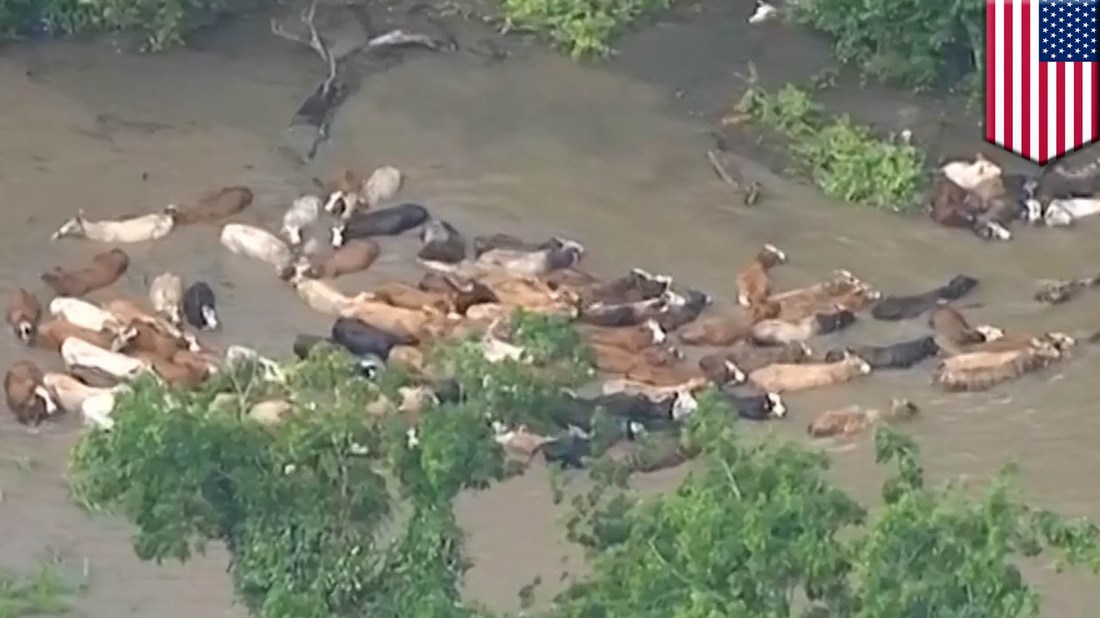
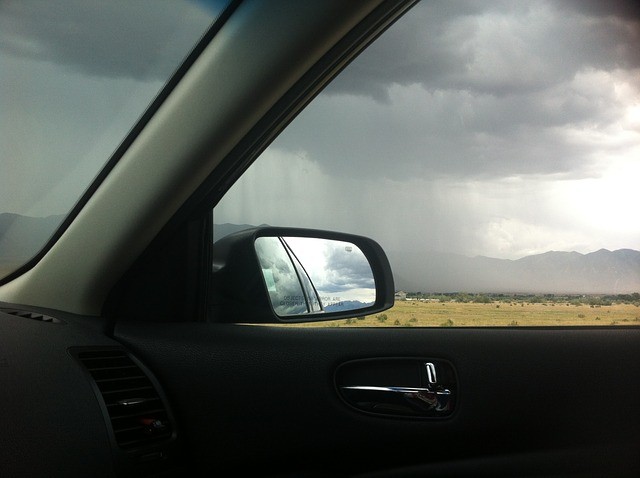
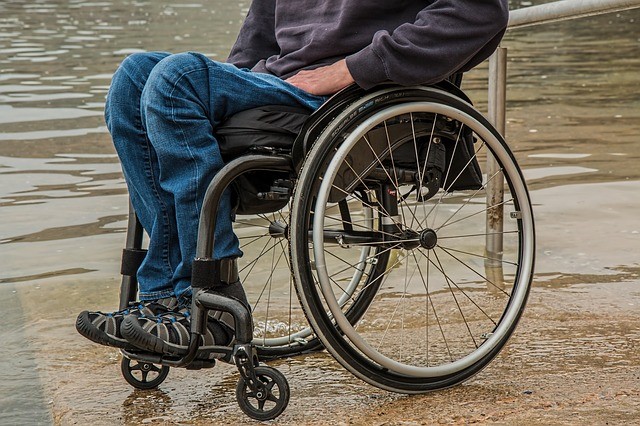
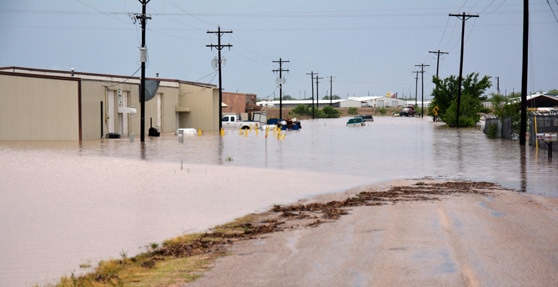

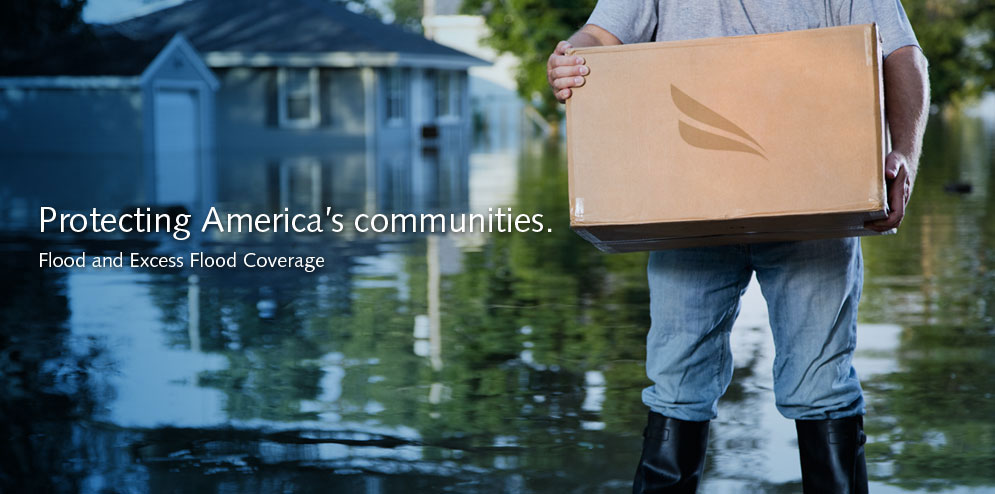
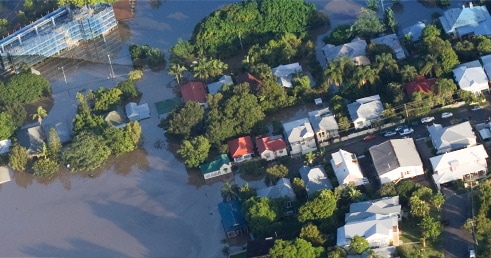
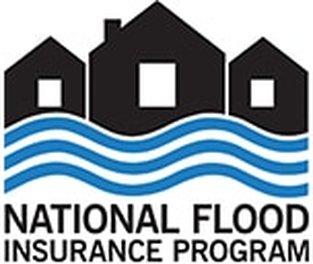

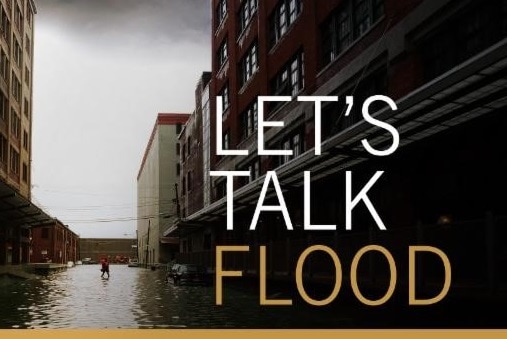
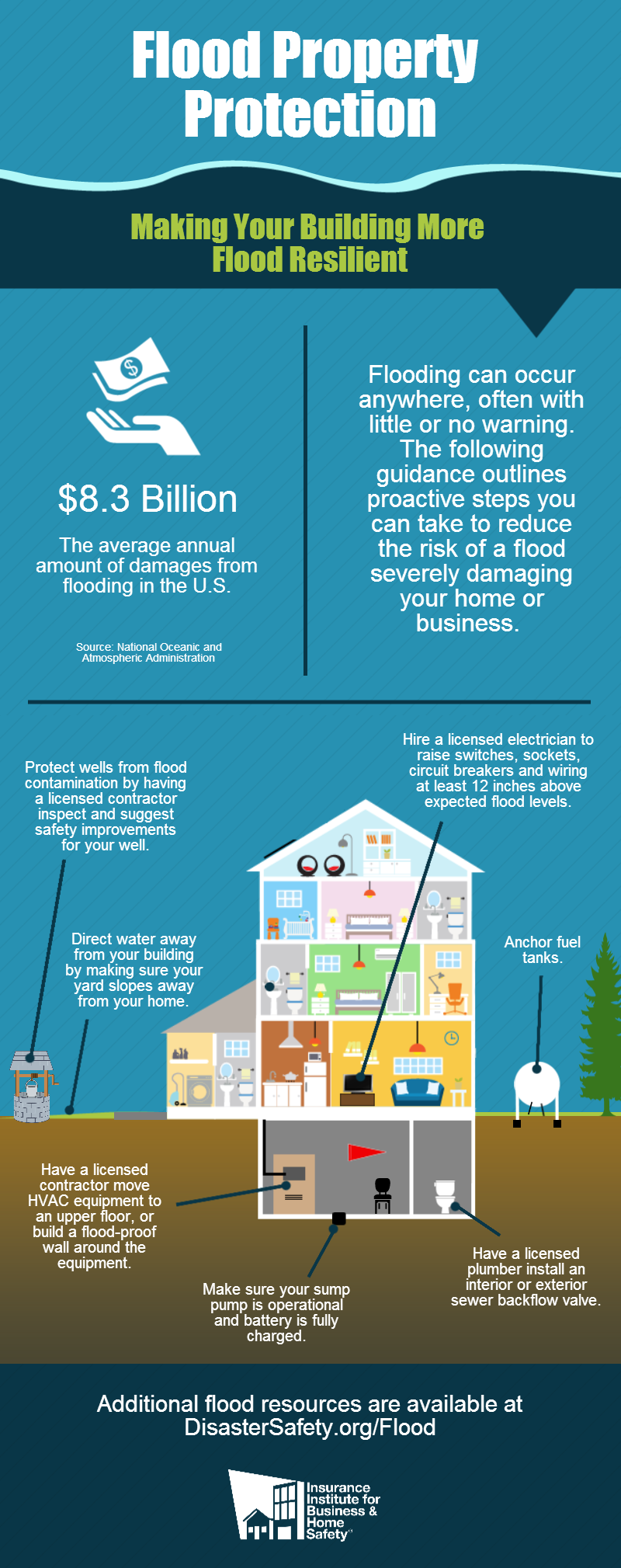
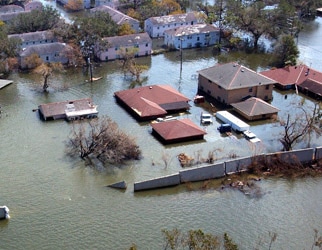

 RSS Feed
RSS Feed
